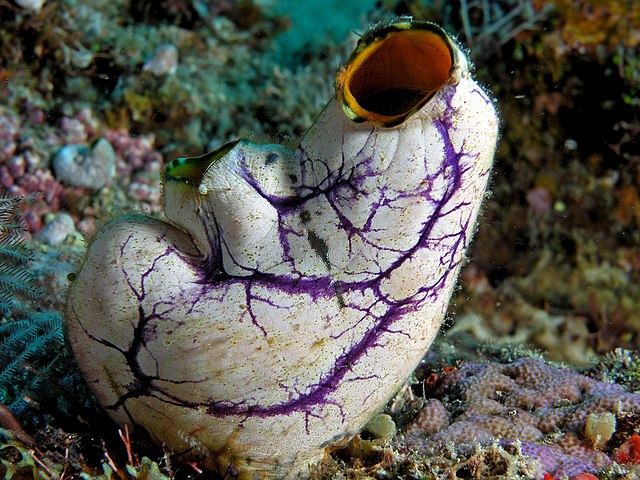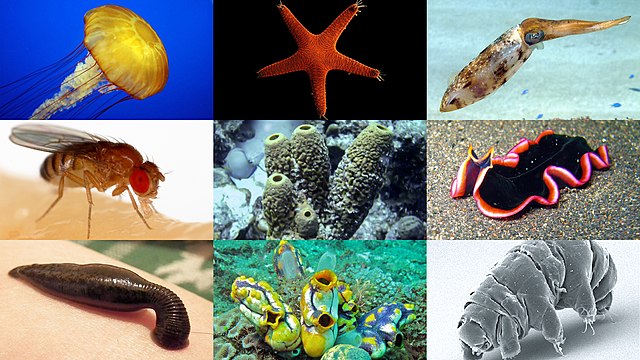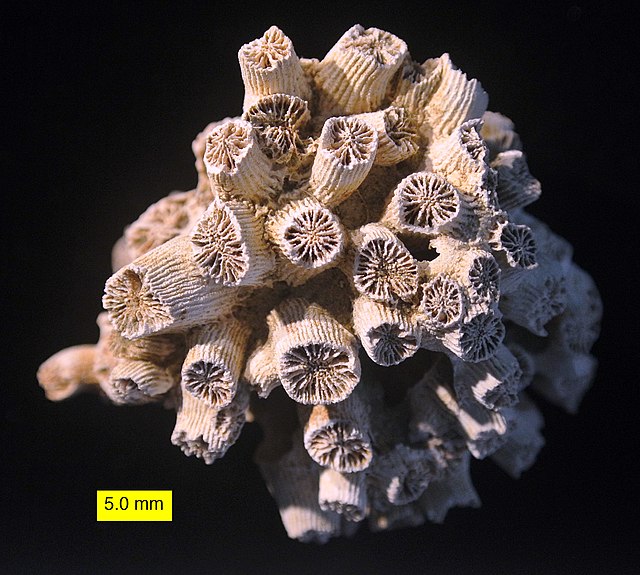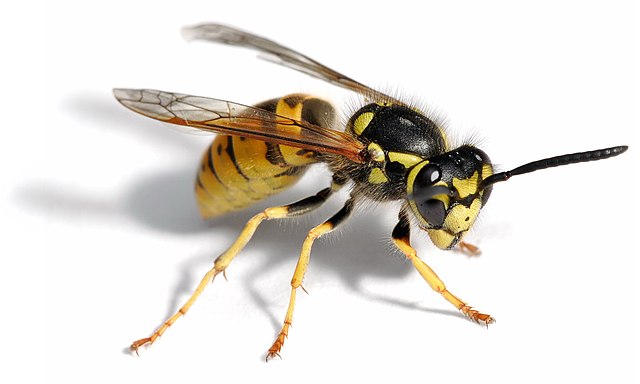A tunicate is a marine invertebrate animal, a member of the subphylum Tunicata. It is part of the Chordata, a phylum which includes all animals with dorsal nerve cords and notochords. The subphylum was at one time called Urochordata, and the term urochordates is still sometimes used for these animals. They are the only chordates that have lost their myomeric segmentation, with the possible exception of the 'seriation of the gill slits'. However, doliolids still display segmentation of the muscle bands.
Tunicate
Clavelina moluccensis, the bluebell tunicate
Botrylloides violaceus showing oral tentacles at openings of buccal siphons
The star-shaped holes (Catellocaula vallata) in this Upper Ordovician bryozoan may represent a tunicate preserved by bioimmuration in the bryozoan skeleton.
Invertebrates is an umbrella term describing animals that neither develop nor retain a vertebral column, which evolved from the notochord. It is a paraphyletic grouping including all animals excluding the chordate subphylum Vertebrata, i.e. vertebrates. Well-known phyla of invertebrates include arthropods, mollusks, annelids, echinoderms, flatworms, cnidarians and sponges.
Invertebrate
The fossil coral Cladocora from the Pliocene of Cyprus
Image: European wasp white bg 02
Image: Platycryptus Undatus Female








